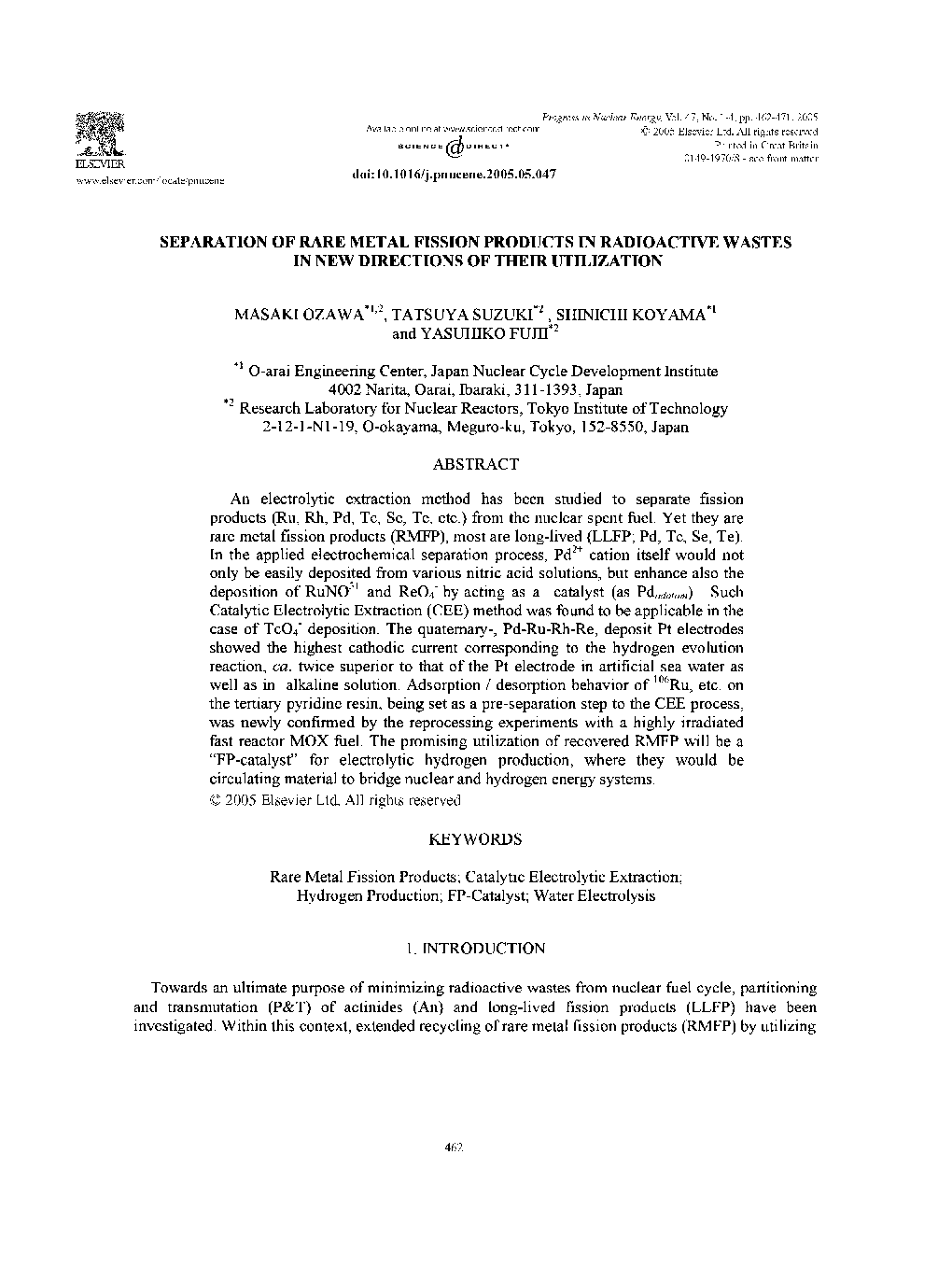| Article ID | Journal | Published Year | Pages | File Type |
|---|---|---|---|---|
| 9825430 | Progress in Nuclear Energy | 2005 | 10 Pages |
Abstract
An electrolytic extraction method has been studied to separate fission products (Ru, Rh, Pd, Tc, Se, Te, etc.) from the nuclear spent fuel. Yet they are rare metal fission products (RMFP), most are long-lived (LLFP; Pd, Tc, Se, Te). In the applied electrochemical separation process, Pd2+ cation itself would not only be easily deposited from various nitric acid solutions, but enhance also the deposition of RuNO3+ and ReO4â by acting as a catalyst (as Pdadatom). Such Catalytic Electrolytic Extraction (CEE) method was found to be applicable in the case of TcO4â deposition. The quaternary-, Pd-Ru-Rh-Re, deposit Pt electrodes showed the highest cathodic current corresponding to the hydrogen evolution reaction, ca. twice superior to that of the Pt electrode in artificial sea water as well as in alkaline solution. Adsorption / desorption behavior of 106Ru, etc. on the tertiary pyridine resin, being set as a pre-separation step to the CEE process, was newly confirmed by the reprocessing experiments with a highly irradiated fast reactor MOX fuel. The promising utilization of recovered RMFP will be a “FP-catalyst” for electrolytic hydrogen production, where they would be circulating material to bridge nuclear and hydrogen energy systems.
Related Topics
Physical Sciences and Engineering
Energy
Energy Engineering and Power Technology
Authors
Masaki Ozawa, Tatsuya Suzuki, Shinichi Koyama, Yasuhiko Fujii,
